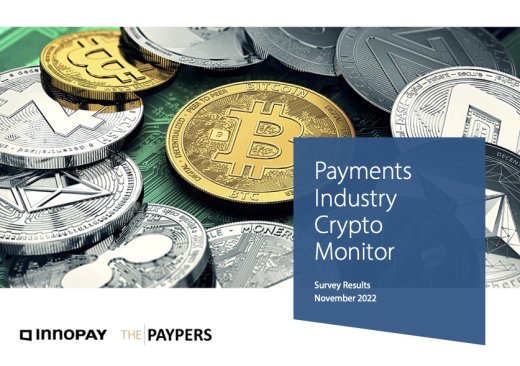Crypto Monitor: 88% believe crypto will change the payments industry

The first edition of our INNOPAY/The Paypers Payments Industry Crypto Monitor contains some revealing findings. For example, 88% of the respondents expect crypto to have an impact on the current payment infrastructure, which is why some are already ‘testing the water’. But strikingly, many respondents are not yet offering crypto products or services due to unclear regulations and AML/KYC challenges.
Although some organisations are now offering services based on crypto technology, they are still in the minority (24%). Our study shows that the majority of the respondents see various crypto-related opportunities and are keen to pursue them but are still very much at the exploratory stage: reading and researching the crypto opportunities (53%), talking with customers (43%), or preparing decision-making for usage or going to market (26%).
Drivers of crypto products
The biggest reason for already offering crypto products is the fact that crypto enables innovation of current services and offerings (62%). Other key reasons are the changing demand from customers (55%) and opportunities for new business models (55%), followed by the reduction of costs (44%) and the increased ease of processing – both in terms of settlement (43%) and possibilities for cross-border payments/remittances (42%). The respondents regard the possibilities of no chargebacks (26%), the possibility to make the yield on balances (12%), and no negative interest rates (9%) as less important.
Barriers to crypto products
Unclear regulation (71%) is by far the most important reason why respondents are not currently offering crypto products. This is followed some way behind by AML/KYC challenges (53%). Both reasons imply that the paymenst industry’s use of crypto is being held back by trust issues.
Fast, secure, and low cost
It comes as no great surprise that most respondents (88%) expect crypto to have an impact on the payment landscape, but it is interesting to examine the underlying reasons: predominantly the security, speed, and low cost of crypto in comparison with today’s payment infrastructure. However, many respondents recognise the friction point of crypto in terms of AML/KYC and that the tipping point is still some way off. Others only see very specific benefits in terms of use cases (e.g. digital custody transactions). Most of the 12% who do not expect crypto to have an impact on the payment landscape seem to see little added value in a ‘parallel’ system, while a handful believes that CBDCs will outrun crypto.
How will crypto have an impact?
When it comes to the impact areas of crypto infrastructures, respondents expect cheaper and fast settlement (78%), faster innovation (71%), more financial inclusion (55%), and more liquidity options for merchants and corporates (47%). No one in the study indicates that they expect merchants to offer their services for free, and only a few respondents expect cash to disappear (25%) and IT costs to decrease (15%).
Regulation, competitive forces, and geopolitical developments
Regulation, competitive forces, and geopolitical developments are seen as the three most important drivers in the adoption of crypto. Improved operational risk regulation has proven to be highly needed in 2022, with the meltdown of some prominent exchanges and investment firms including FTX, Celsius and Tree Arrows Capital. The war in Ukraine is a very topical example of a geopolitical event in which the incumbent financial infrastructure has been weaponised by excluding Russia from global payment networks. This has contributed to increased awareness about the possibilities of crypto-based decentralised infrastructures. Meanwhile, central banks worldwide are studying and experimenting with Central Bank Digital Currencies, eyeing an alternative global currency and payment infrastructure.
The future of crypto in the payments industry
Members of the payment industry seem willing to offer crypto products and services and are preparing their organisations by gaining more knowledge about the technology and customer demands. While regulatory issues in particular appear to have been holding the industry back so far, new regulations in the foreseeable future (e.g., MiCA) are likely to change this. Besides hopefully giving the payment industry more trust in crypto, this will also help organisations to build resilient, compliance frameworks to counteract the regulatory curve (e.g., digital onboarding, screening, operational risk management).
Download the Payments Industry Crypto Monitor report in full below.
The survey was conducted between June and September 2022 among a cross-section of the worldwide payments industry (merchants, banks, fintechs, regulators, consultants, etc.). More than 100 respondents provided insights into their understanding of crypto and their views on its key aspects and relevance.




